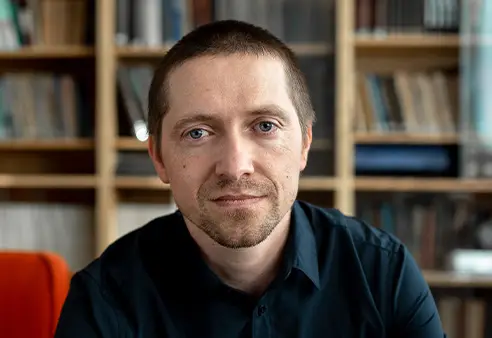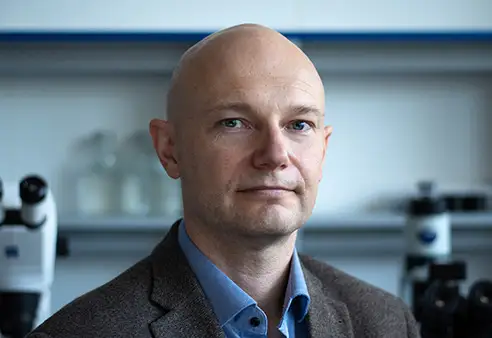Ing. Maria Omastova, DrSc. is a respected chemist and expert in conductive polymer composites and nanocomposites. She currently works as a senior researcher at the Institute of Polymers of the Slovak Academy of Sciences, and is a member of the SAS Presidium, Deputy Vice-President for International Relations. The top quality of her research is confirmed by the high citation rate of her publications, wide international cooperation and frequent invited lectures at international scientific conferences.
Her research focuses on applications of nanotechnology and nanomaterials research, which include the preparation and modification of conductive polymer particles, carbon-based nanoparticles, as well as inorganic nanoparticles, such as MXeny, and their combination with other nanoparticles or polymers with the aim of creating new types of materials with interesting new properties.
Conductive polymers are often used in solar cell research, where they are used as electrodes. Mária Omastová's team used new hybrid materials with a polymer matrix and nanoparticles as electrodes in solar cells, where they replaced expensive platinum. The interesting thing about conductive polymer composites is that they respond to an external impulse, so they began to be studied as new types of actuators and sensors. "As part of my first major European FP7 project, we have created a material that can change its shape caused by an external stimulus, such as light. The result was supposed to be a new generation of displays for the blind," says Mária Omastová.
Mária Omastová also has numerous multidisciplinary collaborations. One of them is the V4 Korea project, in which chemists, physicists and materials scientists collaborated to create a new type of solar cell with higher efficiency. The APVV project of four institutes of the Slovak Academy of Sciences, including the Institute of Polymers, also accomplished significant achievements. Its goal was to create a nanoplatform that could target cancer cells. "By chemically modifying the graphene oxide particles with magnetic nanoparticles and an antibody, we have created a new material for the diagnosis of cancer cells, and we believe that further research will confirm the possibility of targeted cancer treatment."
Mária Omastová is also the researcher in charge of the environmental project "Macroplastic pollution in and along the Danube". Its aim is to analyse plastics and bring a comprehensive study about plastic waste in the Danube and along it, evaluate the environmental impact and prepare a methodology for their sorting. An important element of the project is raising awareness of plastic pollution in the society, as well as educating primary school teachers and students. "If we are able to find out which types of plastics pollute our waters and learn their sources, we will be able to take the necessary measures to prevent pollution of the environment." explains Mária Omastová
She is currently working on a project supported by H2020, whose acronym is Nano2day, involving 11 partners from various European countries and the USA. She and her team are preparing new materials (composites and nanocomposites), which are doped with new types of two-dimensional nanoparticles, MXene. They are new electrically conductive types of two-dimensional structures. The task is to mix nanoparticles with polymers, and obtain new materials for electromagnetic shielding in this way. As part of this project, they collaborate with experts from other fields and companies that will be ready to test the materials in practice.
In the past, Mária Omastová was the chairwoman of the Slovak Chemical Society and is the representative of Slovakia in the European Polymer Federation. She regularly organizes conventions of chemists, which is a top summit of experts in chemistry. The aim of this event is to bring people together with the aim of exchanging knowledge and establishing cooperation. In addition, she aims to inspire young people to stay in research, and to show them that chemistry is a fascinating science that is constantly bringing something new, as Nobel Prize laureates have also lectured at conventions.
During the course of her career, Mária Omastová has received numerous significant awards, such as the Pribina’s Cross 1st Class Award, which is awarded by the President of the Slovak Republic. In her free time, she likes to go to a classical music concert, an opera, a drama or to a gallery. She is also the co-organizer of the concert, which was created as a realization of the idea of promoting the invention of contact lenses and today celebrates the relationship between science and art.



